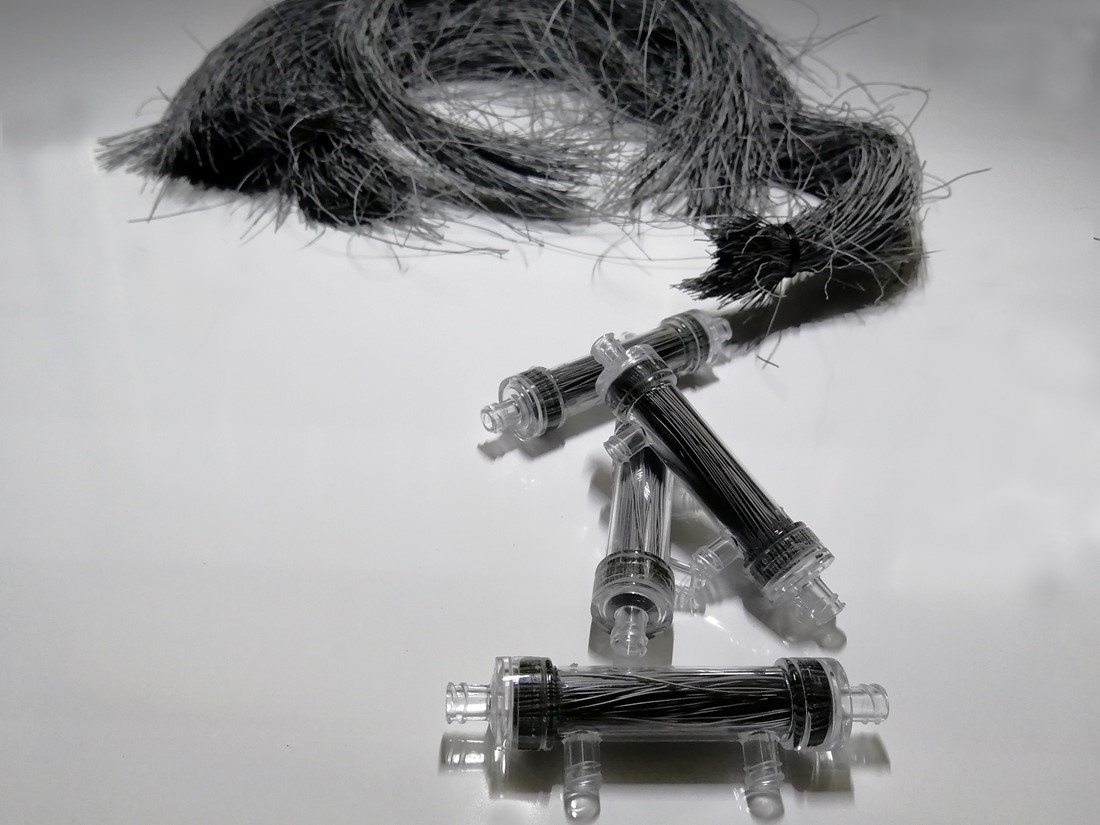Why is graphene so useful in water filtration technologies? Medica explains
Medica SpA, an Italian R&D company involved in Graphene Flagship Spearhead Project GRAPHIL, explains how graphene can play a key role in water filtration technologies. Representatives of Medica recently shared their work with a wide range of stakeholders at JEC World 2023.
Deep in northern Italy, in the little-populated and otherwise tranquil commune of Mirandola, sits the Mirandola Biomedical District. Created in the 1960s by visionary pharmacist Mario Veronesi, who recognised the market potential of disposable medical products, the district has since grown to become the most important biomedical sector in Europe and the third-most important worldwide.
Among the many initiatives in development there, water filtration technologies have long been a focus area. At the recent JEC World 2023 event, the Graphene Flagship spoke with representatives of Medica SpA – one of the industrial partners involved in the Graphene Flagship spearhead project GRAPHIL – to learn more about water filtration, why it matters more than ever, and how graphene can help.
Can you please tell us a little about Medica?
Of course! Medica is a research and development company that has been active in the Mirandola Biomedical District since 1985. We exist to innovate and develop new products related to blood purification, although we also work on projects related to the design, development, and production of disposable medical devices and electro-medical machines.
That sounds really exciting. And how about graphene – how does it complement and interact with your work?
Graphene forms a part of the water filtration technologies we are developing in partnership with Icon Lifesaver and Polymem S.A industrial partners, and academic partners CNR, Chalmers University and Manchester University, all leaders in the water purification sector, as part of the Graphene Flagship Spearhead Project GRAPHIL.

Medica Water Filters enhanced with graphene.
How would you explain GRAPHIL to our audiences?
GRAPHIL is a project aimed at developing and producing innovative filters for household water treatment and portable water purification. It was conceived with the goal of ensuring that everyone has clean and safe tap water.
The innovative water filters that we are developing can be easily connected directly to a household sink, or used as a portable water purification device, to ensure easy access to safe drinking water at an affordable cost. As for where graphene enters the picture, GRAPHIL aims to manufacture a compact filtration system using polymeric hollow fibre membranes blended with graphene.
Something really exciting about the water filters developed through the GRAPHIL project is that they are effective at reducing emerging contaminants present in the water. This is hugely important – including to us, as a biomedical company – because clean water is imperative in medical contexts and well as more broadly. European water quality is generally high, but many factors have contributed to an increase in the number of contaminants released into the environment every day, and many of these contaminants are resistant to conventional purification technologies. GRAPHIL water filters have the potential to mitigate this challenge.
For those curious about the scientific details: how do these water filters work?
GRAPHIL’s filters combine membrane filtration and absorption mechanisms to remove both microbiological and chemical contaminants. Ultrafiltration and microfiltration allow for the removal of bacteria and pathogens, while graphene-enabled adsorption targets emerging contaminants like antibiotics, drugs, PFAS, and heavy metals.
Can you tell us whether we should expect to see these water filters on the market?
Yes, absolutely. The exciting news is that there has been high interest from the market. While moving products to market can take years, we have already reached our goals in terms of product design and development and are consequently focusing now on establishing manufacturing and production frameworks. We expect to have more good news this year and the next.
Many thanks again to Medica representatives for sharing these insights into the work with us. To learn more about Medica, visit their website here: https://www.medica.it/.




